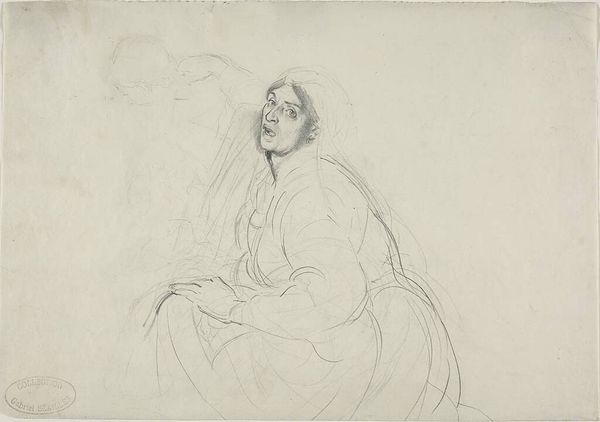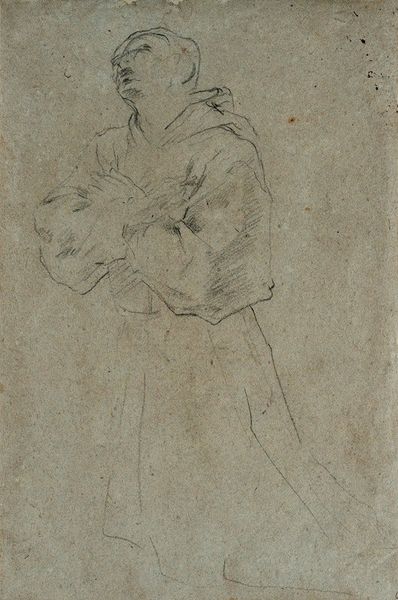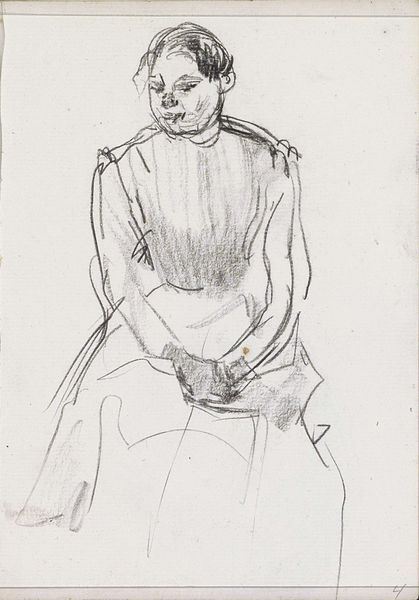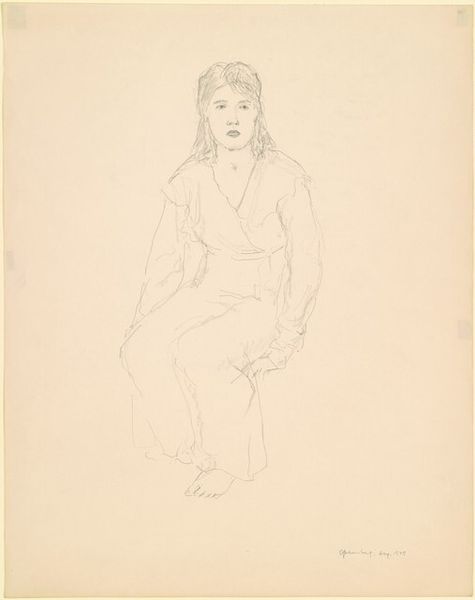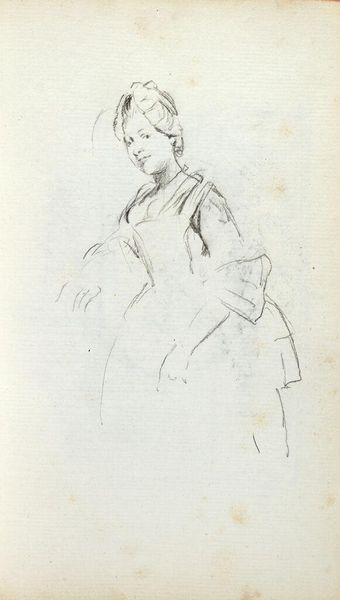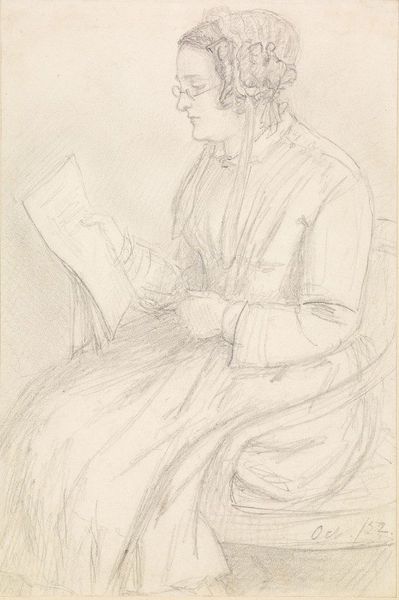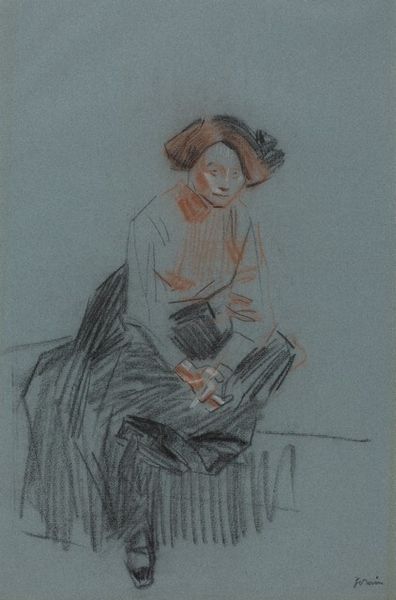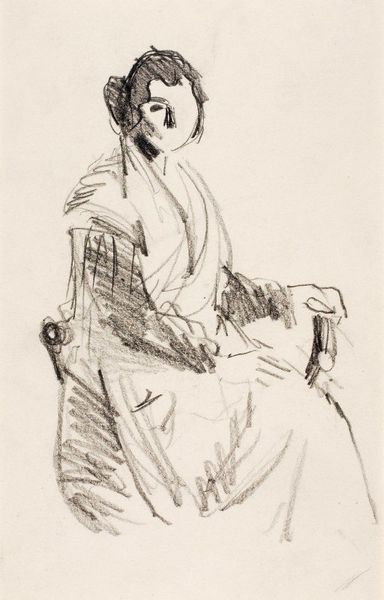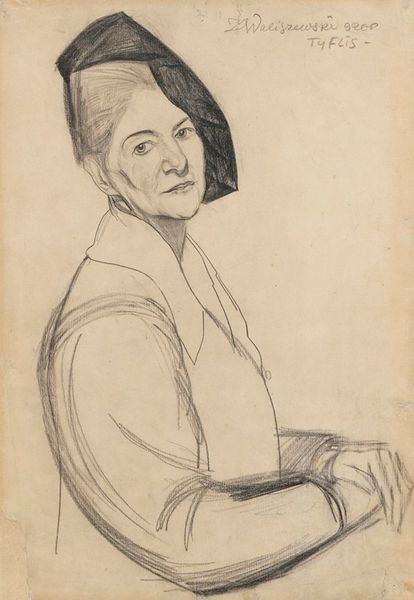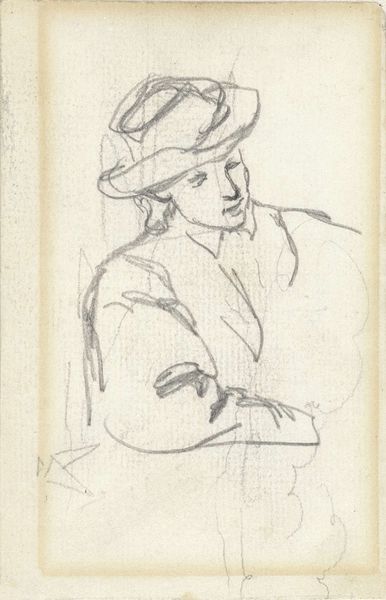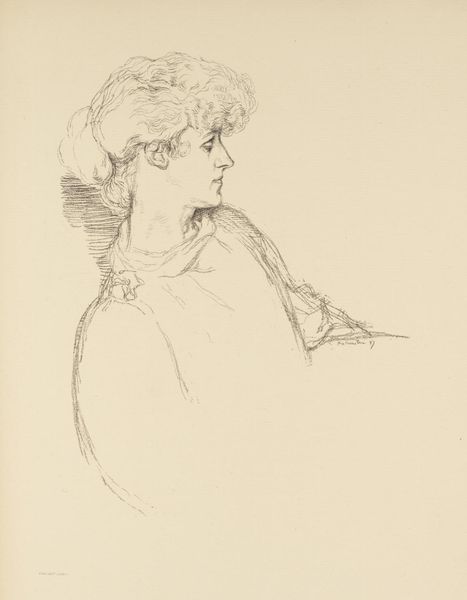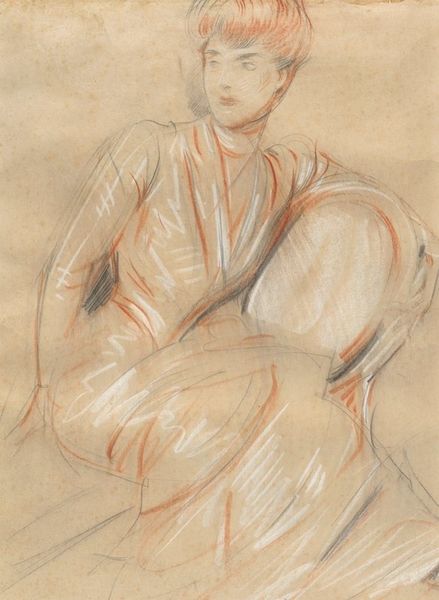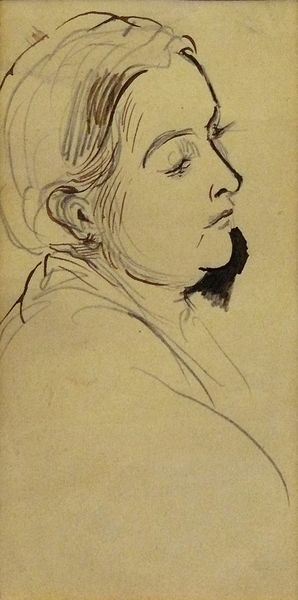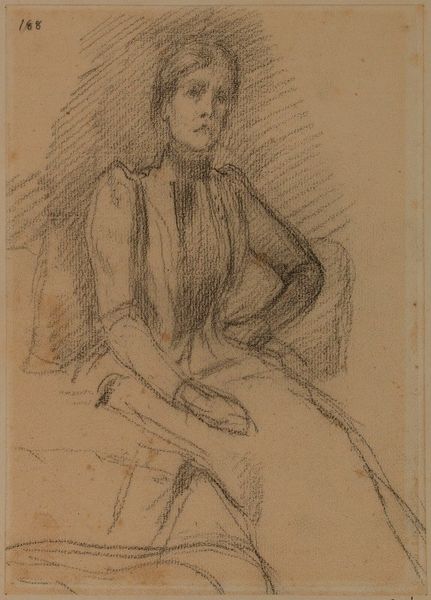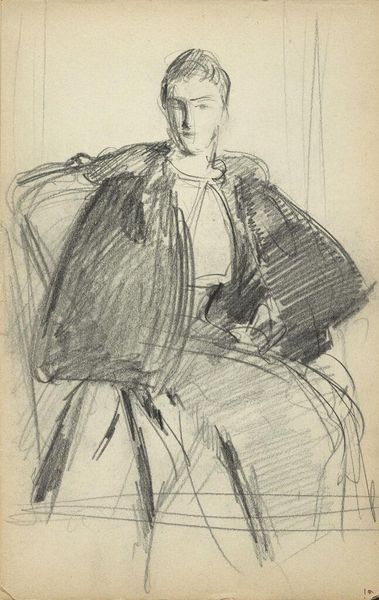
drawing, coloured-pencil
#
portrait
#
drawing
#
coloured-pencil
#
impressionism
#
coloured pencil
#
modernism
Copyright: Public domain
Curator: Toulouse-Lautrec's rendering of Misia Natanson is truly compelling. He captures her essence, her gaze turned just so, a study in poise and intellect. Editor: My immediate reaction is drawn to the contrast between the very deliberate application of color to her face and the somewhat raw and unfinished quality of the rest of the composition. Curator: Absolutely. Consider the backdrop of late 19th-century Paris, the burgeoning artistic scene and the role of women within it. Misia Natanson was a muse, a patron of the arts. Toulouse-Lautrec’s impressionistic portrait hints at her cultural power. The stark white makeup becomes almost a mask, concealing and revealing simultaneously. Editor: And structurally, this colored pencil drawing uses the negative space around her form in a fascinating way. The bare canvas defines her figure just as much as the drawn lines do. Note, too, how he employed different weights of line to define form versus contour. Curator: Precisely! Let's think about gender representation. Was Natanson objectified or empowered by artists of her time, and how does that tension manifest in this piece? Is she performing for the male gaze, or asserting her presence within a patriarchal art world? Editor: I see a confident use of line and color. The very subtle shift in the red and blue pencils articulates a powerful three-dimensionality. What I find particularly captivating is the way the overall asymmetry introduces an element of modern tension. Curator: This tension is crucial, especially when examining social standing in modern art. Natanson, as an upper-class woman involved with the avant-garde, held a position of both privilege and scrutiny. Her willingness to engage with art and culture can be read as an act of defiance against conventional gender norms, particularly through collaboration with marginalized figures, like Toulouse-Lautrec himself, due to his physical disability. Editor: These deliberate stylistic choices emphasize form and line so exquisitely that they convey a rich sense of atmosphere. Curator: Thinking about the social dimensions, Toulouse-Lautrec, as an outsider, used his art to scrutinize the inner circles of Parisian society. He immortalized figures like Natanson, offering a critique on class and power through his unique lens. Editor: Examining this work gives one a feeling that Toulouse-Lautrec aimed for, and exquisitely captured, her very spirit. Curator: Understanding the historical and social backdrop adds another dimension to viewing "Portrait of Misia Natanson." It shows the artist’s role as both artist and commentator.
Comments
No comments
Be the first to comment and join the conversation on the ultimate creative platform.
